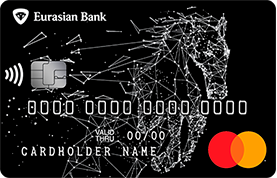In 2021, the Bank continued to systematically implement the sustainable growth strategy aimed at maintaining a balance between current profitability for shareholders and investments in the future – digital transformation.
The Bank profit doubled and amounted to 13 billion tenge (6.7 billion in 2020). This was made possible thanks to the 13% growth of the loan portfolio, improved risk management practices and an emphasis on outpacing growth of transaction income.
The loan portfolio of corporate business increased by 27% and amounted to 285 billion tenge. In this segment of our business, we focus on deepening relationships with current customers whose business models, financial condition and business reputation meet our high requirements. We also conduct targeted attraction to the Bank of customers from areas of the economy in which the Bank has market-leading expertise. This strategy allows us to flexibly and quickly respond to customer needs and keep the risk at an acceptable level.
The loan portfolio of retail business increased by 11% and amounted to 511 billion tenge. In this segment, we focus on the unsecured lending products and auto loans that are traditionally strong for our Bank, and we are also actively developing a relatively new card business for us. In 2021, we focused on the digital transformation of the retail business and by the end of the year, customers were able to receive all our products in digital format, including the first online car loan process in the CIS. The Bank reviews the risk appetite for each product at least monthly, based on an in-depth analysis of market trends, which allows combining portfolio growth with an acceptable level of risk-taking.
Investments in digital transformation in 2021 amounted to 371 million tenge. We invested 214 million tenge in modernization of key software and hardware complexes, which increased the availability of critical applications up to 99.8%, ensuring smooth operation of the key products and services. 156.9 million tenge was invested in the development of new digital products and services, including the constantly developing flagship Smartbank application, which allows receiving all retail products and services of the Bank in digital format. Investments in the remuneration of colleagues working on digital transformation have increased by 4%, which allows us to compete on an equal footing for digital talents not only with genuinely respected colleagues from the banking sector, but also with companies from other high-tech sectors of the economy.
With all this, we put the reliability of the Bank at the forefront. Capital adequacy at the end of the year was 12.2%, which exceeds regulatory requirements by 3.7%. The level of highly liquid assets amounted to 49.5%, we keep this “margin of safety” high by international standards to ensure the Bank’s ability to adapt to market volatility and quickly respond to the emerging needs of our customers in lending. The Bank’s rating on the Moody’s scale is __ and was confirmed __ with a “stable” outlook. At the same time, the international credit rating agency gave the following comment: “The confirmation of the rating reflects Moody’s expectations regarding the Bank’s sustainable development. Stable outlook on long-term ratings takes into account the assessment of sufficient capitalization of the Bank, good profitability and high liquidity, which allows to manage the risks of possible weakening of asset quality due to higher inflation and tightening of business conditions”.
Within the first 4 turbulent months of 2022, the Bank profit amounted to 17 billion, which once again confirms the Bank’s ability to adapt to a difficult external environment.
On behalf of the shareholders and employees of the Bank, I thank our customers and partners for mutually beneficial cooperation and I am sure that all the best is ahead.
Regards,
Valentin Morozov





